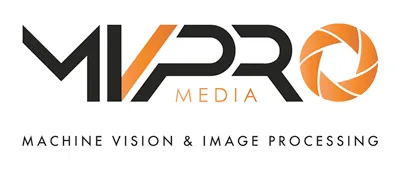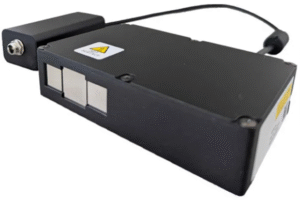Dorothee Bär, Federal Minister for Research, Technology, and Space.Photo courtesy of the German Government (Photographer: [Luca Macke]
Germany is taking a bold step in the global race for artificial intelligence (AI). With a new €5.5 billion national AI strategy, announced on July 15, 2025, the government aims to make AI account for 10% of the country’s GDP by 2030. The plan, backed by the Federal Ministry of Education and Research (BMBF) , focuses on AI innovation, infrastructure, and talent, and has major implications for one of Germany’s strongest technology domains: machine vision.
Machine vision, the ability of AI to “see” and interpret the physical world, is already embedded in Germany’s industrial DNA, powering automotive assembly lines, robotic inspection, and advanced manufacturing. With this strategy, Germany is signaling its intention to lead not just in AI broadly, but in vision-driven automation, a field critical to its economic future.
A National AI Offensive: Context and Timing
The German cabinet is expected to formally approve the plan by the end of July 2025, following months of consultation with industry and research stakeholders. The strategy is part of Germany’s wider High-Tech Strategy 2025 and aligns with Europe’s push for digital sovereignty in emerging technologies.
While the €5.5 billion figure may appear modest compared to France’s €109 billion AI plan or the scale of U.S. and Chinese investments, Germany’s focus is sharper: build world-class AI infrastructure for industrial applications. For sectors like automotive, logistics, and robotics, where Germany is already a global powerhouse, this AI push could be transformative.
Strategic Goals: AI as 10% of GDP
This target relies on several key initiatives:
- AI Infrastructure: Germany will establish large-scale AI processing centers and high-performance computing (HPC) clusters. These are vital for training and deploying machine vision models that analyze terabytes of visual data in real time.
- Quantum Computing: By 2030, Germany aims to develop two error-corrected quantum computers, enabling breakthroughs in complex optimization tasks and massive vision model training, from self-driving car simulations to predictive maintenance algorithms.
- Talent & Research: The government will expand AI competence centers and create new AI professorships, fostering next-generation expertise in computer vision and related fields.
- Integration Across Sectors: Beyond tech hubs, the plan emphasizes embedding AI in manufacturing, mobility, healthcare, and public services, domains where machine vision is a natural fit.
Machine Vision at the Core of Germany’s Industrial Strength
Germany’s manufacturing and automotive sectors are prime beneficiaries of this AI plan. Machine vision is already used extensively for:
- Automated Quality Control: Detecting microscopic defects on production lines at companies like BMW and Bosch.
- Robotics Guidance: Enabling industrial robots (e.g., KUKA) to perform precise assembly and material handling.
- Smart Logistics: Optimizing sorting and routing in warehouses operated by DHL and DB Schenker.
- Healthcare Imaging: Supporting advanced diagnostics and surgical robotics in Germany’s leading hospitals.
With government-backed AI infrastructure and research funding, these applications can evolve from siloed deployments to nationwide capabilities, accelerating innovation cycles and reducing dependence on foreign cloud and semiconductor providers.
How the Strategy Will Be Implemented
The AI offensive will roll out in phases:
- Approval & Funding Allocation (2025): Cabinet greenlight followed by budget disbursement across ministries and competence centers.
- AI Processing Centers & Quantum Hubs (2026–2028): Building facilities capable of supporting edge AI and computer vision workloads.
- Scaling Industrial AI (2028–2030): Deployment of vision-enabled AI across factories, logistics hubs, and public infrastructure.
Public-private partnerships will be crucial. Major German corporations ( Volkswagen, Siemens, BASF, and others) are expected to co-invest and integrate government-backed AI resources into their R&D pipelines.
Competing on the Global Stage
Germany enters this AI race against formidable competitors:
- United States: Home to Nvidia, OpenAI, and Amazon Go, the US dominates vision-driven retail and autonomous driving innovation.
- China: Companies like Alibaba, Hikvision, and JD.com lead in surveillance and retail AI, with massive state backing.
- France: Recently announced €109 billion AI investment, including infrastructure for AI-powered robotics and retail tech.
Germany’s differentiator lies in its industrial focus: leveraging strengths in automotive, machinery, and robotics where machine vision is already mission-critical.
Challenges and Critiques
While ambitious, the plan faces hurdles:
- Scale of Investment: €5.5 billion, though significant, may struggle to match U.S. and Chinese spending.
- Talent Shortage: Germany must attract and retain top-tier AI and computer vision researchers amid global competition.
- Ethics & Regulation: Compliance with the EU AI Act will be essential, particularly for privacy-sensitive vision applications in healthcare and public spaces.
- SME Adoption: Smaller manufacturers may lack resources to integrate advanced AI without targeted support.
Why This Matters for Machine Vision
Machine vision stands to be one of the biggest beneficiaries of Germany’s AI strategy. By funding infrastructure, research, and talent pipelines, the government is laying the groundwork for:
- Next-gen industrial automation with more precise, efficient vision systems.
- Autonomous mobility innovations in cars, drones, and logistics.
- Healthcare breakthroughs in imaging diagnostics and robotic surgery.
- Exportable vision technologies that strengthen Germany’s global tech footprint.
If executed effectively, this strategy could shift Germany from a follower to a leader in vision-enabled AI, reshaping not only its economy but also Europe’s role in the global tech race.
Conclusion: Vision as Germany’s Competitive Edge
Germany’s €5.5 billion AI strategy is more than a funding plan; it’s a blueprint for AI-powered industrial reinvention. Machine vision, the ability of AI to interpret the physical world, is central to this transformation, bridging Germany’s legacy of precision engineering with the demands of a digital future.
The next five years will be critical. If Germany can translate investment into scalable vision solutions, it won’t just catch up to global competitors: it could redefine how AI powers the world’s most advanced manufacturing economy.
















